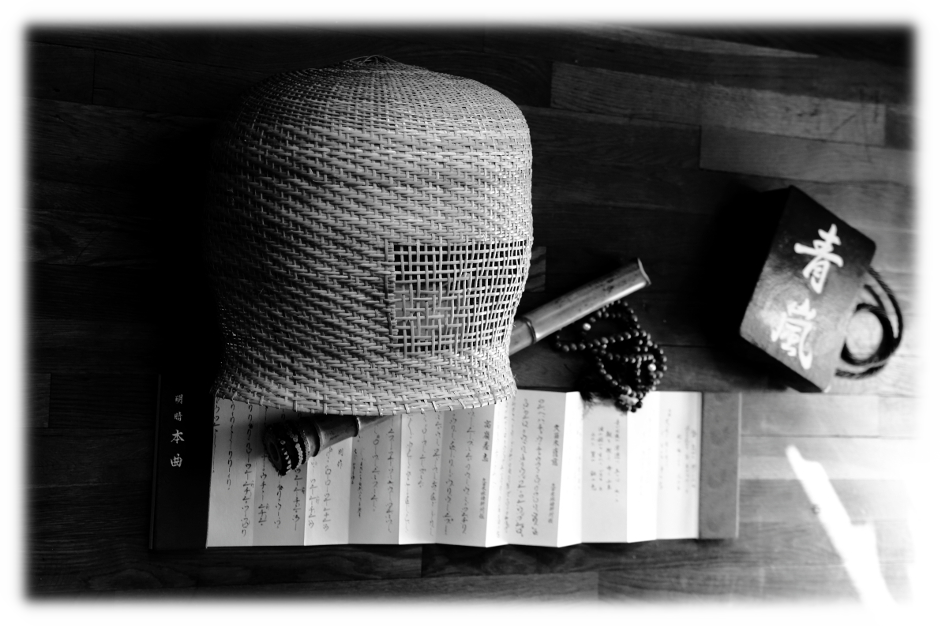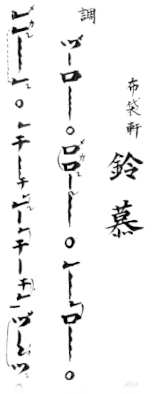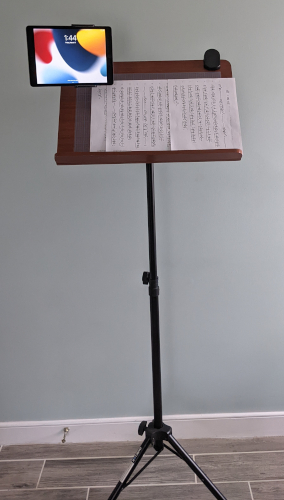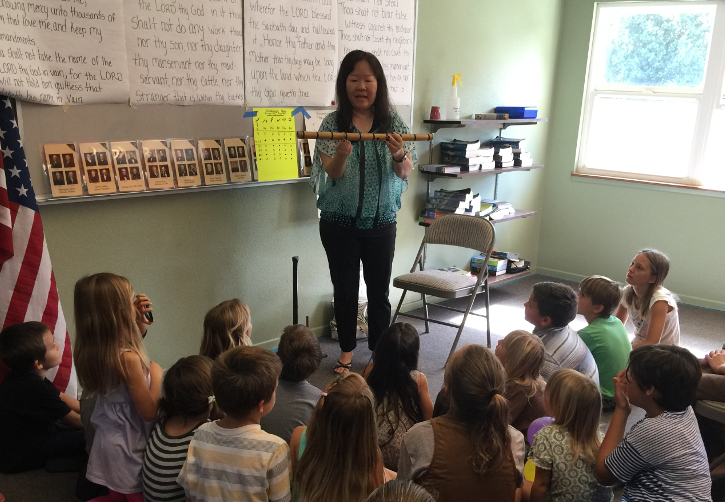
Shakuhachi Lessons
In your shakuhachi lessons, I'll guide you toward the sounds that call to you. With time, playing your shakuhachi will be like chatting with an old friend. I'll be happy to help you get there. You can meet with me in-person or over Skype video chat. Below, you can find info on shakuhachi lessons with me. Reach out with any questions you may have or to get started, Josen (Jon Kypros)
➤ If you don't have the time and money for live lessons, or if they give you anxiety, then check out my shakuhachi video courses (coming soon in 2024!)
Learn on a shakuhachi that inspires you...
I can teach you on any length/key of shakuhachi so that you can learn on one which truly inspires you. This great privilege and joy is afforded to me by the fact that I'm a shakuhachi craftsperson (see my shakuhachi for sale page to learn more about my work).
Receive the Honkyoku 本曲
In lessons, I'll pass down to you diverse regional styles of Honkyoku in an unbroken chain of teacher and student that stretches back hundreds of years. No matter which path we take, you'll experience the most venerated pieces of shakuhachi music, and that's what's important. All the variations between styles and masters are closer to the surface, riding on the same deep undercurrent.
In shakuhachi there's a saying, ichi on Jobutsu or 'one sound Buddhahood/enlightenment' — let's enjoy the 'one sound' together. In the expandable menu below you can learn more about the styles I teach, especially the older Edo period Honkyoku.

The older, regional Honkyoku styles I teach
Below is a list of the older, regional styles of Honkyoku which were passed down to me by my teacher Justin Senryu. Much of these Honkyoku were preserved in the lineage of Yamaue Getsuzan 山上 月山 (b. 1908). Yamaue's student Sato Reido 佐藤鈴童 and their student Otsubo Shido both instructed my teacher. We help to preserve these pieces and others in Justin's Senryu-kai shakuhachi school, in which I hold my Dai Shihan 'Grandmaster' license. For the Seien Ryu of Fudaiji Temple, we have the late Iwata Seien VI to thank who also taught Justin directly.
While I've strived to perfect all of these styles over the years, I focus on the Fudaiji Honkyoku as passed down in both the original Seien Ryu form and the wonderfully more complexly ornamented versions from Myoan Taizan Ha.
- Fudaiji Temple 普大寺 (Seien Ryu 西園流)
Honkyoku from Fudaiji Temple 普大寺, Hamamatsu and Nagoya. These are the Honkyoku Higuchi Taizan first learned in his hometown and which he eventually used to form the basis of his 'Myoan Taizan Ryu' or 'Myoan'/'Meian', as it's commonly referred to, after moving to Kyoto. - Kinpu Ryu (aka. Nezasa-ha) 錦風流 / 根笹派
Honkyoku from Aomori prefecture in the far North which was founded by still active Samurai. Kinpu Ryu has a distinct pulsing breath called Komi buki. - Kyushu-Kei 九州-系
Honkyoku from Kyushu which is said to be the birthplace of Honkyoku. From various Komuso Fuke shu temples such as Icchoken aka Itchoken. - Oshu Kei 奥州-系
Honkyoku from the former Oshu region which included Echigo Myoanji Den 越後国 明暗-伝, Northern Japan: significant influence on Watazumi, and thus his student Yokoyama Katsuya. - Myoan Shinpo Ryu 明暗真法流
Honkyoku from Myoanji temple, Kyoto. Also known as Kyu or 'Old' Myoanji. Shinpo Ryu uses a largely different set of Katakana for its notation (prior to Taizan's Myoanji which has none of the Honkyoku from Kyu Myoanji).
Honkyoku styles from Masters
- Myoan Taizan Ha or Ryu 明暗 対山派
I teach select Honkyoku from Myoan Taizan Ha, including all of the Myoan versions of the original eleven Fudaiji Seien Ryu Honkyoku. Higuchi Taizan 樋口 対山 (1856 - 11/22/1914), the founder of Myoan Taizan Ha, was first a Seien Ryu player. Taizan then traveled Japan collecting more Honkyoku before settling in Kyoto and founding the Myoan Taizan Ha, as well as reviving Kyoto's Myoanji temple. In particular, I specialize in transmitting a very faithful version of Ajikan directly based in the lineage of Miyagawa Nyozan 宮川 如山 (7/6/1868 - 11/22/1946). - Jin Nyodo Kei 神 如道-系
Jin Nyodo kei or style was the first I learned at age eighteen in NYC and Kyoto, Japan. This way of playing has come to have very long phrasing and a spacious feeling that many people enjoy. Jin Nyodo also made some very masterful arrangements of pieces such as Fudaiji Kyorei, Darani which is based on one of the Reibo from Myoan Shinpo Ryu. - Watazumi and Yokoyama Katsuya
Honkyoku from Watazumi Sensei's Dokyoku and his student Yokyoyama Katsuya's Chikushinkai 竹心会 AKA Kokusai Shakuhachi Kenshukan (国際尺八研修館) or KSK, as it's referred to outside of Japan. I specialize in the piece Tamuké. I also transmit Hon Shirabe and Yamagoe.
Exploration and Creation - Improvisation and Composition
We can preserve these classics and enjoy the freedom to explore and create. I would greatly enjoy empowering and encouraging you to explore via improvisation, and maybe even create your own humble compositions. Like learning how to write, eventually we can make poetry — even if that just means playing the notes our hearts want to hear in the moment…
FAQ about shakuhachi lessons with me
"How much and availability?"
The current rate is 65€ for one, 1-hour long shakuhachi lesson or discounted at 120€ for two and 240€ for 4. I'm available Monday - Thursday from noon my time to my final slot of 6-7 pm Madrid time (Fri - Sun 85€ per hour with limited slots)."How often?"
If you're a total beginner I've found that less than two lessons per month often results in the development of bad habits (there are some rare exceptions of course). However, after you've become more proficient with the basics of shakuhachi playing, or with a new style of Honkyoku, it generally becomes safe to take lessons less frequently, if you desire."How to pay?"
I accept direct bank transfers aka wires and will provide you with my Wise account details or you can sign up to Wise for free and find me on there with my username @jonathank208 (the transfer fees must be covered by you so that I receive the exact amount required).Alternatively, I also use Stripe which works just like PayPal but this won't be available until I have a more permanent dwelling/address in Spain. There will be service fees for this method added thus transferring via a free Wise account is almost always the most cost effective payment method.
The shakuhachi lessons you purchase from me are good for six months from the date of purchase, after which they expire. This is to ensure regular, studious practice which shows respect to both the tradition and to me as a shakuhachi teacher.
"Notation?"
I'll provide you with digital shakuhachi notation for free. Custom hand written notation by me and/or specially printed shakuhachi notation might be occasionally available for sale."Which app?"
I teach over Skype because it's the only free, unlimited video chat app that works across all devices. Be sure to add me on Skype by searching for flutedojo or Josen. Also turn off 'noise cancelation filtering' in the Audio settings.Cancellations?"
Scheduled shakuhachi lessons can be canceled with at least 3 days of advanced notice at no charge. By contrast, in Japan many teachers do not allow cancelations at all."How soon should I begin? Should I get better before taking lessons?"
By taking shakuhachi lessons as early as possible I can help you to avoid bad habits, many of which are very subtle and challenging to unlearn. That being said, in your shakuhachi lessons I'll patiently help you to banish bad habits."What should I do before my first shakuhachi lesson?"
First, be sure to add me on Skype and send me a text message on their with your name so I know it's you. You can find me by searching for flutedojo or Josen. Before your first shakuhachi lesson, familiarize yourself with my shakuhachi note charts. If it get's frustrating or confusing, don't worry, I'll clear things up in your lesson. If you do well and feel confident you can progress to my instructions for the Honkyoku Kyorei. Also take a look at my Tips for your shakuhachi lessons below.
➤To begin taking shakuhachi lessons, contact me directly.
Tips for your shakuhachi lessons
Warmup practice before shakuhachi lessons
To make the most of your shakuhachi lessons, I recommend that you begin warming up/practicing at least 30 minutes before our lessons. In this way, you'll also be early for our shakuhachi lesson and ready for my call (since I often schedule students back-to-back with a small buffer, it's essential that lessons begin and end on-time).
Test devices and app before the shakuhachi lesson
Before each shakuhachi lesson it's a good idea to check and make sure that your devices and Skype are all updated and working properly. You might want to do this the day before our lesson, actually. Doing this will prevent your shakuhachi lesson time from being consumed by troubleshooting.
Turn off/disable all 'noise cancellation/filtering' for shakuhachi lessons
For shakuhachi lessons, 'noise cancellation/filtering' must be turned off in the Audio settings for Skype (if you struggle to find the setting search the web for a guide specific to which ever device you're using). Noise cancellation must be turned off because it filters out our shakuhachi as 'noise', no matter how good our playing...
Prepare shakuhachi notation prior to the shakuhachi lesson
Of course, I recommend that you have new shakuhachi notation printed and ready for your shakuhachi lesson. It's a good idea to print two copies of the notation; a 'clean copy' to reference and another copy on which you can write notes. Alternatively, notes can be made on a separate blank page, referencing the shakuhachi notation by line number and breath (I can teach you this method in the lesson). Doing so can also give you the option of just viewing the notation file on your screen.
Camera positioning and posture for shakuhachi lessons
In shakuhachi lessons, I must be able to see you from your bottom hand to at least your eye level. It's best if you play shakuhachi standing up, however, if sitting, make sure that your spine is 'straight'; don't lean back into your chair. Make sure that your chair armrests don't hit your arms and don't rest your arms on them while playing the shakuhachi.
I greatly encourage you to use the same posture/position for our lessons and your practice sessions. For instance, if you practice shakuhachi sitting down then you should ideally take your shakuhachi lessons seated (standing is preferable to all other positions for playing the shakuhachi).
It's also advisable to place your shakuhachi notation at eye level, or at a level which allows you to keep good posture. You can tape/affix your shakuhachi notation to the wall, however, a better solution is the setup I use which is a tablet affixed to a sturdy music stand using a 'gooseneck' (see pictures below).


➤To begin taking shakuhachi lessons, contact me directly.
Kind words from students...
- I wanted to say how much I enjoyed our lesson today. Thank you so much for your care and attention - I know it will be invaluable, I'm so eager to begin applying what I learned to my practice. Can't wait till next time!
- I just got an email from someone wanting to learn from me and they said you sent them my way! Thank you for your generosity Jon - From a fellow shakuhachi teacher
- Thanks a million, Jon! That hour yesterday saved me years of learning and gaining confirmation (confidence). Knowing that I’m on the right track, rough around the edges tho I might be, enables me to concentrate on enjoying playing. I played both of your flutes today and they remind me each time I do just how lucky I am to have them.
- Your help is amazing, and my dominant ‘left-brain’ translated your very last line, of your last message, to a very enjoyable an productive session this morning. The ‘physics’ aspects of Shakuhachi are so important to me as I begin this journey, and I feel I have a very clear vision of body posture, head position, diaphragm, to ensure optimum airflow to my lips. Embouchure is a process and I feel there is progress understanding and feeling what the goal is.
- Thank you for the class! I know the road is long and the journey ahead of me with the Shakuhachi is going to be very difficult. I am learning many things through the process, however, The Shakuhachi is an amazing instrument. It is almost as if an extension of our being with all its moods, turbulence, longing for solitude and peace. One day things play so nice and the others as if back to ground zero.
The goal is not to seek perfection or to entertain as much as it is to overcome the self, the ego, the inner voice that keeps on telling us all what we can not do instead of all what we can accomplish. Thank you for being my teacher. Thank you for being kind and patient with my slow learning. You are a very kind soul Jon. You do not make me feel bad when clearly my ability to play is so jarring. Peace!
- I’m making progress daily with the exercises in your book. I realized that if I start with the otsu exercise then it makes the kan exercise much easier for some reason. I’m getting pretty consistent sounds in kan, and I’m getting better with the octave jumping exercise too. My kan notes are more windy than my otsu notes, and not nearly as nice, but each day I can play them a little quieter and a little less windy. I totally see how important just having a very small opening between your lips is, and how the pressure in your mouth is the key.
- Thanks for an enlightening session! The devil is in the details as they say… As a visual artist it makes me think [about how] I could spend a lifetime learning just how to draw a perfect circle, or even a truly straight line. Each song, Life, moment etc., even the simplest, is so grand it contains a universe. Tremendously appreciative of this moment. Deep deep deep Bow
- Thanks again for the awesome lesson today! I think you struck the perfect balance between explanation and playing/practice, and I love your teaching style. You’re a very good teacher, and I look forward to our next lesson!
- At least three times now you have honed in on problems I was having with the sound of my flute and suggested corrections that were immediately effective, with lasting result. Nothing I could have read in a book, or gained from listening to a Master player would have solved these difficulties, and I doubt I could have solved them on my own. I certainly had tried. It takes a good teacher.
- I have been trying to play for a little more than a year (with a teacher) and yours is the first decent explanation I have gotten on achieving Kan. I experimented with the tighter lips and higher pressure and saw an immediate result. THANKS!
- You are a great teacher. You actually helped me with my embouchure for bansuri (indian side-blown flute). The large bore and larger mouth hole makes it difficult. Your instruction is helping me think about lip shape and pressure in order to make improvements.
- Yay! I made a note. Now I gotta go do it again and again. Thank you so much for the lesson… I love it so far even if I can’t make it work constantly =-) *progress!!!
- You are responsible for helping me make my first sound on my new Shakuhachi. Thank you!
- You are a very good teacher. And thanks for the tips. Bless ya! :)!

(My student Mrs. Hironaka teaching her students about the shakuhachi!)

(My student Johnny Bess teaching their students about the shakuhachi!)
The 3 key elements - Form, Sound, and Music
I've found that it's essential to cover these 3 key elements, in order, when teaching shakuhachi to my beginner level students. First, we begin with your form or posture and how you hold the shakuhachi. This is the foundation of all your efforts. Next, we'll move on to your sound or how to make your first tones. Finally, we arrive at music - even if you can't make a sound yet. As you progress down the path, what you'll find is that each and every time you pick up the shakuhachi you'll be perfecting aspects of these 3 key elements, even if you don't realize it.
- Form - how you hold your body and your shakuhachi is your foundation upon which your shakuhachi playing is built. In your shakuhachi lessons, the first thing I will address is your posture, specifically, how you can have good posture with your unique body. Next I'll help you to hold your shakuhachi properly and safely.
This not only ensures that you'll make better and faster progress with playing your shakuhachi but also helps you to prevent possible injuries from poor form, known as 'RSI injuries'. A more subtle aspect of this is also any body tension you might have, which is usually from overcompensating and/or mental strain or stress, both of which I'm happy to help you overcome/let go of.
- Sound - of course, naturally you wish to make sounds on the shakuhachi as soon as possible. I greatly enjoy helping my students with the incredibly subtle aspects of playing the shakuhachi well. However, the adjustments that your body will need to make are so minute that you must simply practice. In your lessons, we must avoid over intellectualizing this process or trying to force or 'hack' it. As soon as you understand the fundamentals of how to make sounds and practice, we'll move on to the 3rd area below. We should not wait until your sounds are free-flowing in order to move on. Actually, you don't even need to make sounds to begin learning music.
- Music - learning music is not actually dependent on your ability to make sounds on the shakuhachi. There's so much that you'll learn before your're anywhere near proficient with making consistent sounds. For example, I'll teach you how to read the notation, move your fingers and head, how and when to breath, and more. By the time you can make consistent sounds you'll be ready to walk, maybe even run, as opposed to crawl.